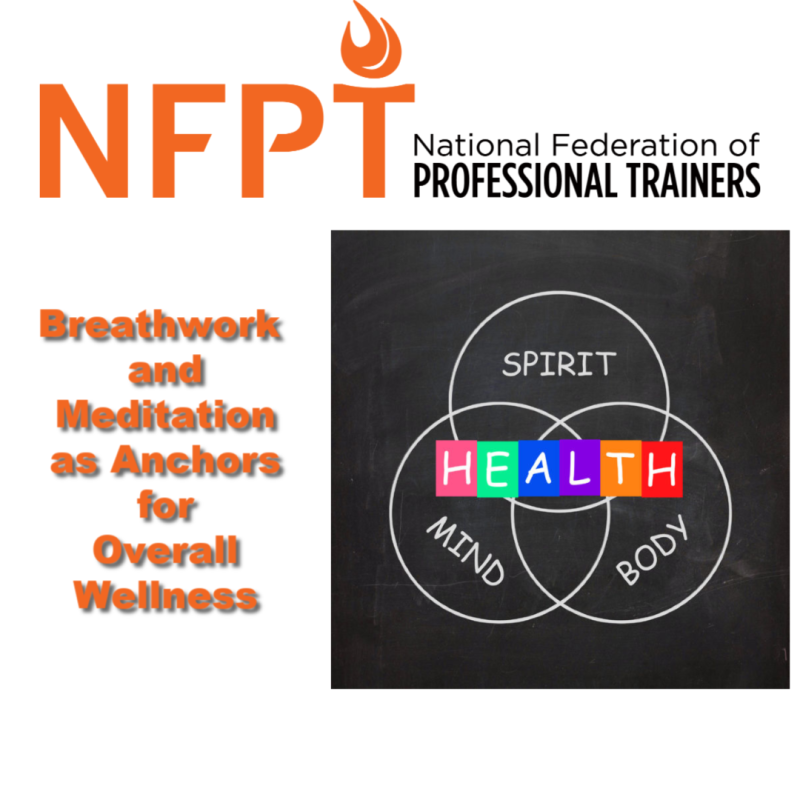
We are a large community of coaches who adopt different approaches and each offering a different primary focus. We all interconnect fitness, nutrition, and lifestyle into our practices. As varying health and fitness professionals, we all work together to help ours and each other’s clients reach their full health potential. Is there a path to achieving this that we all can follow? There are many terms and phrases that relate to whole-body well-being or wellness. The terms whole-body, well-being, and wellness are terms that often get conflated for marketing, but what are they really referring to and how can we guide our clients towards them?
The Spirit and the Body
The foundation of living a healthy lifestyle includes what we are consuming on a spiritual level as well as what we consume to fuel the body. The things we consume on a spiritual level involve:
- What we read
- The energy of those around us
- The news
- Who & what we follow on social media
The most important element immediately affected by these products is our thought. Your mind has 60,000 to 80,000 thoughts per day. That’s 2,500 to 3,300 thoughts per hour. We reflect on every conversation and interaction we have before, during, and after it happens. If we are fueling our minds with negative people, words, and videos; we will make poor health choices on food and activities. Negativity drops our vibration which affects our drive to do better for ourselves.
The terms wellness, well-being, whole-body refer to the management of what we are consuming that fuels our mindset which has a direct impact on the choices we make to fuel our body.
How Do We Manage Our Thoughts?
It’s important to be aware of what is going on in the world and I don’t recommend disconnecting from everyone in your circle. I do recommend Meditation & Breathwork as tools to help manage your thoughts. I’ve worked with Breathwork Practitioners and the common theme is that Breathwork is a precursor to Meditation. During meditation, you are always guided back to your breath when you find your mind has wandered. Vice versa, you will go into a meditative state during a breathwork session.
The great thing about these tools is that you do not have to master one practice before the other. They are interconnected. It is more a matter of picking a tool that works best with you.
BREATHWORK FOR OVERALL WELLNESS
Breathwork refers to different breathing techniques, programs, and exercises that focus on your conscious awareness of your inhalations and exhalations that lasts a specific amount of time. There are many forms of breathwork therapy. Breathworks’ overall goal is to help improve emotional states and decrease stress. The root of breathwork extends from Eastern practices of Yoga, Tai Chi, and Buddhism. However, most of the breathwork we practice in the US was inspired during the conscious-raising era of the 1960s and 1970s.
It all started with Holotropic and Rebirthing Breathwork. Holotropic Breathwork was developed by Dr. Stan Grof and his wife, Christina based on their research on consciousness and the effects of psychedelics like LSD. Rebirthing Breathwork was developed by Leonard Orr and focuses on the traumatic experience of birth.
Out of these two techniques came Integrative Breathwork in 1991. Integrative Breathwork was created by Jacquelyn Small. She expanded on the principles of rebirthing to include general trauma & therapy.
Here are some of the reasons people practice breathwork:
- Positive Self-development
- Boost Immunity
- Develop Life Skills
- Increase/Develop Self-Awareness
- Enrich Creativity
- Improve personal & professional relationships
- Increase confidence, self-image, and self-esteem
- Increase joy & happiness
- Overcome addictions
- Reduce stress & anxiety
- Release negative thoughts
It improves issues such as:
- anger
- anxiety
- chronic pain
- depression
- emotional effects of illness
- grief
- trauma & PTSD
MEDITATION FOR OVERALL WELLNES
Meditation stems from the Latin word ‘meditatum’ meaning ‘to ponder’. Through the practice of meditation, we seek to find a better connection with our body in the everyday moments, that often pass by without our notice, to create a stronger awareness of how our emotions influence our behavior.
The history of meditation is not as clear in when, where, or how it exactly started. It is steeped in many cultures and religions throughout the history of man. Some people will say that meditation is as old as humanity itself. The two most well-known regions in the world associated with meditation are:
India: Written records dating back to 1500 BCE refer to the practice of meditation as Dhyãna or Jhãna as a training of the mind which was translated into meditation.
China: Meditation is referred to as far back as the 3rd and 6th Century BC and linked to Daoist, Laozi, who is an ancient Chinese philosopher. Some terms used to describe meditation from this period are:
- Shou Zhong – ‘guarding the middle‘
- Bao Yi – ‘embracing the one‘
- Shou Jing – ‘guarding tranquility‘
- Bao Pu – ‘embracing simplicity‘
Here are some of the many benefits meditation has on the body and the mind:
- stress reduction
- control anxiety
- promotes emotional health
- enhances self-awareness
- lengthens attention span
- may reduce age-related memory loss
- can generate kindness
- may help fight addictions
- improves sleep
- helps control pain
- can decrease blood-pressure
- you can meditate anywhere (except while driving and operating heavy machinery, of course)
COMMON THREAD
Breathwork and meditation are both about slowing the mind and reconnecting to our core needs. They are a way for us to let go of the stressors that make us dwell on past or future events that serve no purpose in the present. As we stay present in the moment we are better able to make healthy choices in food and activities that support our body.
Hence, those who promote Whole-Body, Wellness, and/or Well-Being are primarily focused on bringing their clients into awareness of their thoughts to help them care for their emotional & spiritual wellness to help keep them on track towards their dietary and fitness goals.
References
Healthline: healthline.com/health/breathwork
Positive Psychology: positivepsychology.com/history-of-meditation







